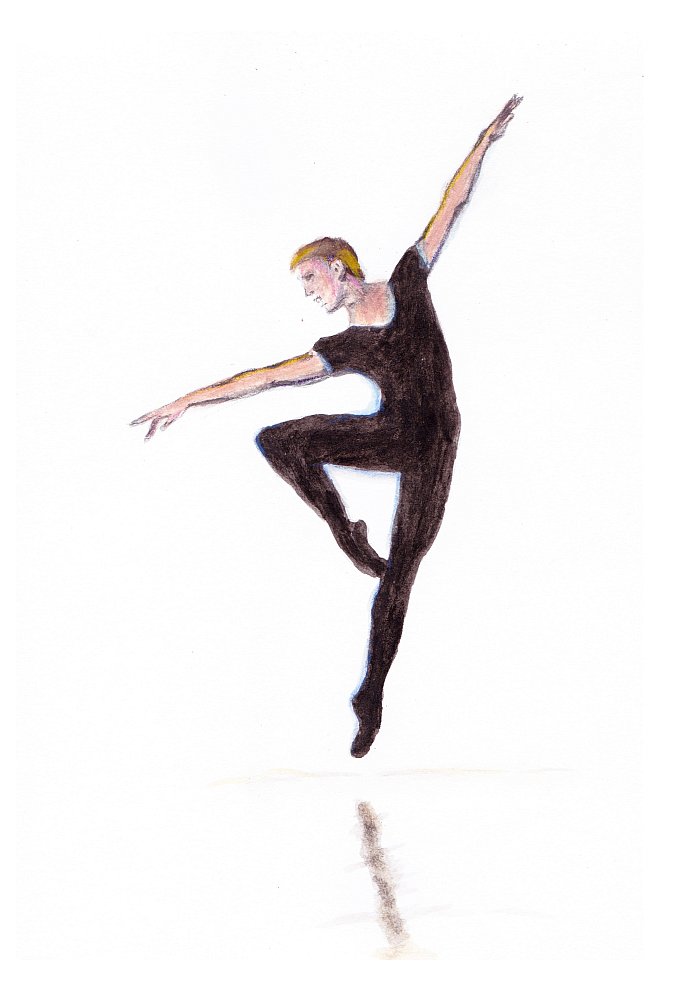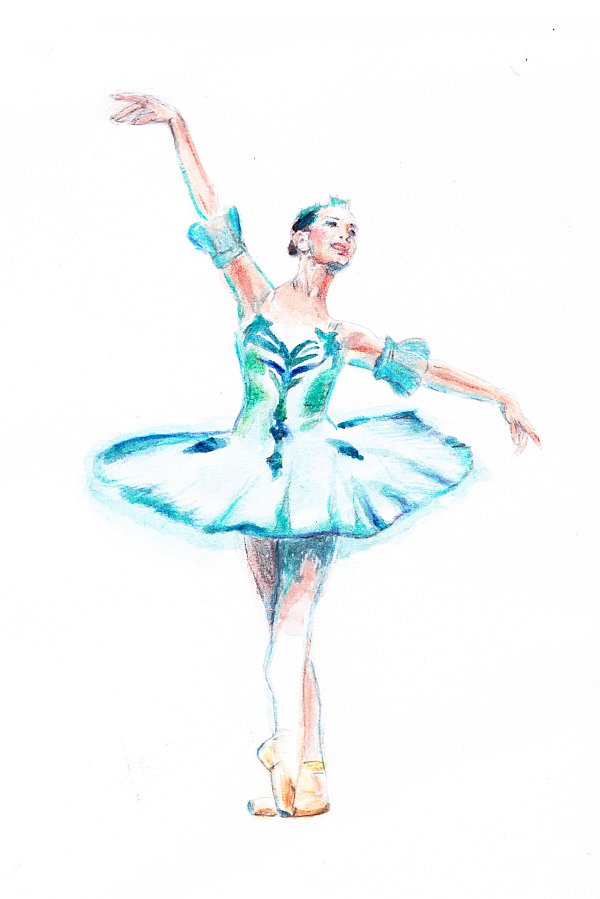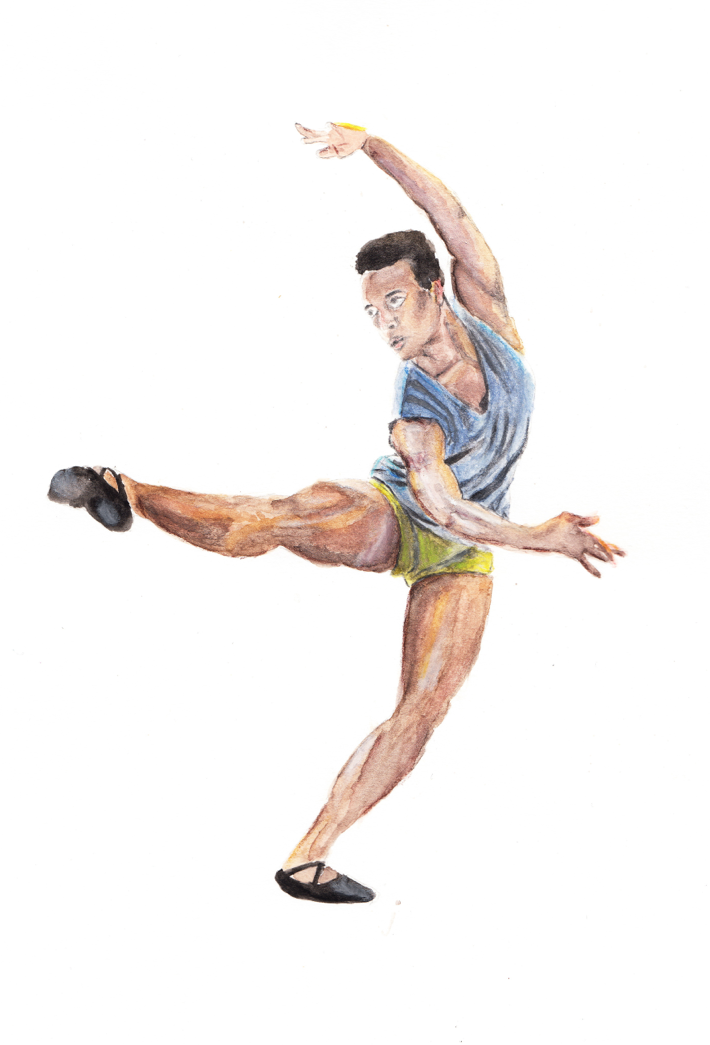Ballet Terms (Continued)
Q to Z
Your Ballet Glossary!
You have found my simple, easy and clear ballet dictionary. This is the Q to Z section of my ballet terms.
Any ballet definition you need to know, you can find right here. If not, then don't hesitate to contact me!
Learning the terms will not only help you understand ballet, but help you improve and give you a greater insight to the purpose of each step.
R
Relevé (ruhl-VAY) Raised. A raise either on pointe or demi-pointe and your foot rises off the floor, either with a small spring or softer motion.
Retiré (ruh-tee-RAY) Withdrawn. The position for pirouettes where the thigh raised and the toe is placed in front, behind or at the side of the knee. The supported leg in straight, on demi-pointe for pirouettes and balances.
Rise This is a smooth relevé, so the toes do not move from the place at which the rise began.
Rolling This is a common technical correction for dancers, so if the feet roll inwards or outwards it is not the correct placement but the weight should be place in the middle of the foot
Romantic ballet A style of ballet created during the early nineteenth century, such as La Sylphide and Giselle.
Ront de jambe (rawn duh zhamb) Round of the leg, a circular movement of the leg. Rond de jambe can be done clockwise (en dehors) and counterclockwise (en dedans).
Rond de jambe à terre
(rawn duh zhamb a tehr) Rond de jambe on the ground. The toe of the working foot does not leave the ground. There are two kinds of ronds de jambe à terre: En Dedans (inwards) and En Dehors (outwards).
Rond de jambe en l'air
(rawn duh zhamb ahn lehr) Rond de jambe in the air. The movement can also be done en dehors and en dedans. The whole movement is made by the leg below the knee, so the thigh must not take the action but it is in the lower leg work.
Royale (ruah-YAL) Royal. A jumping movement where the feet and calves are beaten together before the feet change position. It is also known as "changement battu." It easy to get Royale mixed up with Entrechat, because both beat in the air but the difference is a Royale changes feet when you land.

S
Saut de basque (soh duh bask) Basque jump. A jumping step where the dancer turns in the air with one foot drawn to retire or cou de pied. The male dancers also perform it with a double turn in the air.
Sauté, sautée (soh-TAY) Jumped, jumping.
A la Seconde (ah la suh-GAWND) In the second position, for example, Grand battement à la seconde.
Sickling This term is a technical fault in ballet and applies to the line of your pointed foot, because if the dancer turns their foot in from the ankle, it breaks the straight line of the leg and becomes a sickle. The opposite of this would be called fishing the foot.
Sissonne (see-SAWN) A jump from both feet onto one foot. There are many variations including sissonne fermée, sissonne tombée and sissonne fondue, all of which finish on two feet. It can be jumped in either petite or grande allegro
Sissonne fermée (see-SAWN fehr-MAY)Closed sissonne. This type of sissonne finishes on two feet into a fifth position.
Sissonne ouverte (see-SAWN oo-VEHRT)Open sissonne.
Supporting leg A term used by dancers and teachers for the leg which supports the body, so that the other working leg is free to carry the movement.
T
Temps levé Raised Movement This is a simple jump from one foot and landing back on the same foot.
A Terre (a tehr) On the ground.
Tour en l'air (toor ahn lehr) Turn in the air. This is essentially a male dancer's step, although girls can practice it too. The turn can be a single, double or triple.
You jump straight up into the air from a demi-plié in fifth, then make a complete turn and land back again in the fifth position. The arms support the turn in first position and the head must spot like in pirouettes.
En Tournant (ahn toor-NAHN) Turning. The body turns while completing the required ballet step, for example, Assemblé en tournant.
Turn-out Turn-out is one of the main parts of technique for ballet. The turn out is initiated from hip joints right through to the feet, so the whole leg is engaged to achieve the range of turn out you have.
Tutu (tew-TEW) The traditional costume for a ballerina and there are several different styles of tutu, with the most common being the classical tutu. It is made of many layers of net and decorated in different styles for each ballet.

V
Variation The name for a solo dance performed in a classic ballet.
Virtuoso The grand and challenging steps in ballet such as tour en l'air for the males and fouette turns for the ladies. It takes a lot of skill to master these steps and always the part that gets the big applause from the audience.
Working leg The leg that is carrying out the movement, while other leg is supporting the balance of the body.
This page is Ballet Terms Q to Z. There are no Ballet terms Q.
return from Q to Z to Ballet Dancers Guide homepage or alternatively back to Ballet Terms


